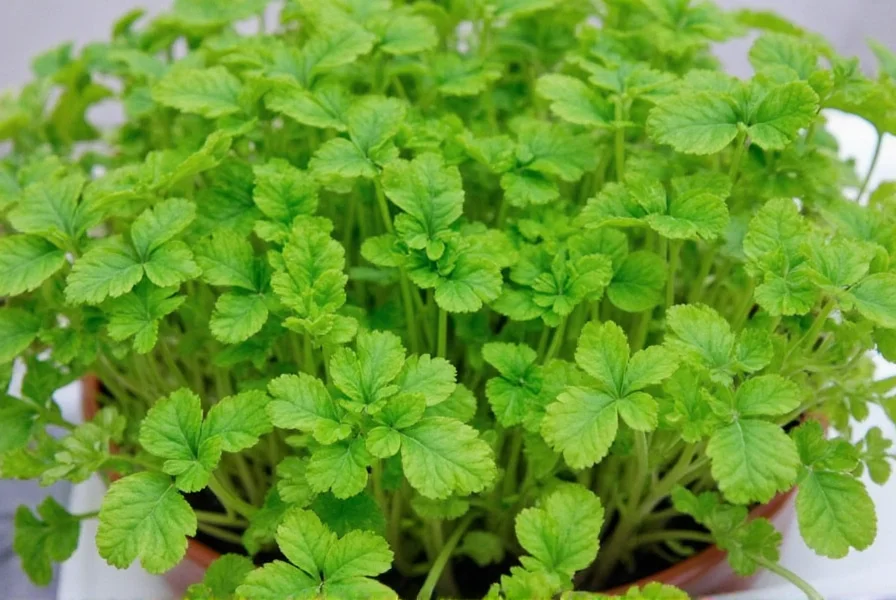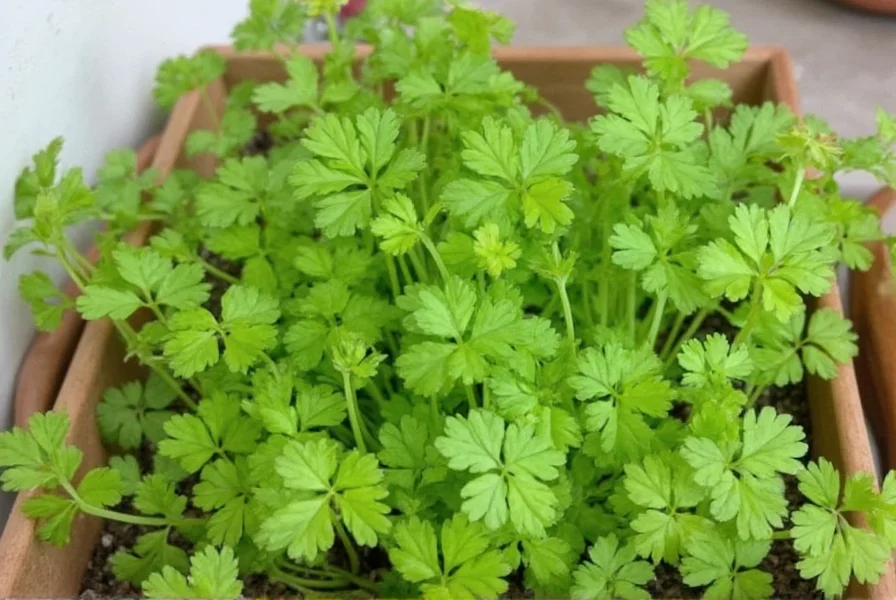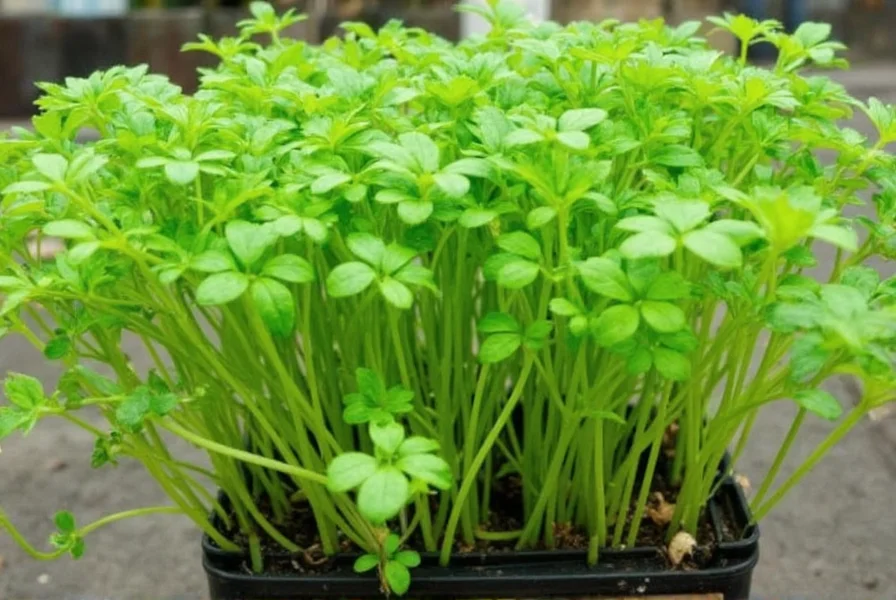Yes, you can successfully grow coriander indoors year-round with proper container selection (at least 25cm deep), bright indirect light (6+ hours daily), well-draining soil, consistent moisture without waterlogging, and temperatures between 15-24°C (60-75°F). Start with fresh seeds, harvest leaves when plants reach 15cm height, and prevent premature bolting by avoiding heat stress and providing adequate light.
The Complete Guide to Growing Coriander Indoors Successfully
Coriander (also known as cilantro) is one of the most versatile culinary herbs, but many gardeners struggle to grow it successfully indoors. Unlike many herbs that thrive in container gardens, coriander has specific requirements that, when met, will yield a continuous harvest of fresh leaves right from your kitchen windowsill. This comprehensive guide provides science-backed techniques for growing vibrant coriander plants inside your home, regardless of outdoor climate conditions.
Why Grow Coriander Indoors?
Indoor coriander cultivation solves several common problems gardeners face with this finicky herb. Outdoor plants often bolt (go to seed) quickly in warm weather, leaving you with bitter, inedible leaves. By controlling the environment indoors, you can extend your harvest season dramatically and enjoy fresh coriander 365 days a year. Plus, having this essential culinary herb just steps from your kitchen means you'll use it more frequently in your cooking, enhancing flavors while reducing grocery expenses.
Essential Requirements for Indoor Coriander Growth
Container Selection and Depth
Coriander develops a long taproot, making container depth critical for healthy growth. Choose pots that are at least 25cm (10 inches) deep with adequate drainage holes. While plastic containers retain moisture better, terracotta pots provide better aeration for roots. For continuous harvests, consider using multiple containers planted at two-week intervals.
| Container Type | Advantages | Disadvantages |
|---|---|---|
| Plastic pots | Better moisture retention, lightweight, affordable | Less root aeration, can overheat in direct sun |
| Terracotta pots | Superior root aeration, temperature regulation | Dries out faster, heavier, more expensive |
| Self-watering containers | Consistent moisture, reduced watering frequency | Higher cost, potential for overwatering if not monitored |
Optimal Soil Composition
The best soil mix for growing coriander inside combines excellent drainage with sufficient moisture retention. Create your own blend using:
- 60% high-quality potting mix
- 30% perlite or coarse sand
- 10% compost or well-rotted manure
Avoid garden soil, which compacts in containers and may contain pathogens. The ideal pH range for coriander is slightly acidic to neutral (6.2-6.8). Test your soil mix with a simple pH meter before planting.
Lighting Requirements for Indoor Coriander
Coriander needs 6-8 hours of bright, indirect light daily for optimal growth. In most homes, a south-facing windowsill provides adequate natural light during spring and summer months. During winter or in rooms with limited natural light, supplement with artificial lighting:
- LED grow lights: 12-16 hours daily, positioned 15-30cm above plants
- Full-spectrum fluorescent bulbs: 14-16 hours daily
Rotate containers regularly to ensure even growth, as coriander will stretch toward light sources, becoming leggy and weak.

Step-by-Step Growing Process
Seed Selection and Preparation
For best results growing coriander from seeds indoors, use fresh seeds (less than one year old), as viability decreases significantly with age. Some gardeners recommend lightly crushing the seed husk to improve germination rates. Soak seeds in room-temperature water for 24 hours before planting to soften the outer shell.
Planting Technique
- Fill container with prepared soil mix, leaving 5cm space below rim
- Sow seeds 1cm deep, spacing them 5cm apart
- Cover lightly with soil and water gently
- Maintain consistent soil moisture at 20-22°C (68-72°F) for germination
Germination typically occurs within 7-14 days. Once seedlings reach 5cm height, thin to 10-15cm apart to prevent overcrowding.
Watering Schedule and Technique
Consistent moisture is crucial when growing coriander inside, but overwatering causes root rot. Follow this watering guide:
- Water when top 2.5cm of soil feels dry to touch
- Water thoroughly until it drains from bottom holes
- Empty saucers after 30 minutes to prevent waterlogging
- Use room-temperature water to avoid shocking roots
During winter months or in dry indoor environments, mist leaves occasionally to maintain humidity, but avoid excessive moisture on foliage which encourages disease.
Fertilizing for Maximum Growth
Coriander isn't a heavy feeder, but regular light feeding supports continuous leaf production. Use a balanced liquid fertilizer (5-5-5 or 10-10-10) diluted to half strength:
- Begin feeding 3-4 weeks after germination
- Apply every 3-4 weeks during active growth
- Reduce frequency during winter dormancy
Organic options like fish emulsion or compost tea work well for indoor coriander cultivation. Avoid high-nitrogen fertilizers which can reduce flavor intensity.
Harvesting Techniques for Continuous Production
Proper harvesting encourages bushier growth and extends your coriander's productive life. Follow these guidelines for harvesting coriander without killing the plant:
- Wait until plants reach 15cm height before first harvest
- Snip outer leaves first, leaving inner growth intact
- Never remove more than one-third of the plant at once
- Harvest in the morning when essential oils are most concentrated
For best flavor, use harvested leaves within 2-3 days. Store in an airtight container lined with a slightly damp paper towel in the refrigerator.
Troubleshooting Common Indoor Coriander Problems
Preventing Premature Bolting
Bolting (flowering) is the biggest challenge when growing coriander inside. Once plants bolt, leaves become bitter and growth slows. Prevent bolting by:
- Maintaining temperatures below 24°C (75°F)
- Providing consistent moisture (avoid drought stress)
- Ensuring adequate light (at least 6 hours daily)
- Choosing slow-bolting varieties like 'Santo' or 'Costa Rican'
If you notice flower stalks forming, pinch them off immediately to redirect energy to leaf production.
Addressing Yellowing Leaves
Yellow leaves indicate several potential issues when growing coriander from seeds indoors:
- Overwatering: Allow soil to dry slightly between waterings
- Nutrient deficiency: Apply balanced liquid fertilizer
- Insufficient light: Move to brighter location or add supplemental lighting
- Natural aging: Older leaves naturally yellow and can be removed
Managing Pests Indoors
While indoor growing reduces pest problems, aphids and spider mites can still affect coriander plants. Control methods include:
- Regularly inspect undersides of leaves
- Spray affected plants with insecticidal soap solution
- Introduce beneficial insects like ladybugs for severe infestations
- Maintain good air circulation around plants

Seasonal Considerations for Year-Round Growth
Coriander thrives in cooler temperatures, making it ideal for fall and winter indoor growing. During summer months when indoor temperatures rise:
- Move plants away from direct afternoon sun
- Use fans for gentle air circulation
- Consider growing in a basement or cooler room
- Plant heat-tolerant varieties specifically bred for warm conditions
For continuous harvests throughout the year, sow new seeds every 3-4 weeks. This succession planting ensures you always have plants at various growth stages.
Advanced Techniques for Productive Indoor Coriander
Growing Coriander from Cuttings
While growing coriander from seeds indoors is most common, you can also propagate from cuttings:
- Take 10cm stem cuttings with several leaf nodes
- Remove lower leaves and place in water
- Change water every 2-3 days
- Transplant to soil when roots reach 2.5cm length
This method works best with store-bought coriander that hasn't been treated with growth inhibitors. Success rates are lower than seed propagation but can provide a quick start.
Creating the Ideal Microclimate
Coriander prefers moderate humidity (40-60%). In dry indoor environments:
- Group plants together to create a humid microclimate
- Use pebble trays filled with water beneath containers
- Consider a small humidifier for your growing area
Avoid placing plants near heating vents or drafty windows which create temperature fluctuations.
Conclusion: Enjoy Fresh Coriander Anywhere
With proper attention to container selection, lighting, watering, and temperature control, growing coriander inside becomes a rewarding and sustainable practice. The key to success lies in understanding coriander's specific needs and creating a stable environment that prevents premature bolting while encouraging continuous leaf production. By following these evidence-based techniques for growing coriander indoors, you'll enjoy a steady supply of fresh, flavorful leaves that enhance your culinary creations throughout the year.
Frequently Asked Questions
How often should I water indoor coriander plants?
Water indoor coriander when the top 2.5cm of soil feels dry to the touch, typically every 3-5 days depending on temperature and light conditions. Always water thoroughly until it drains from the bottom, then empty the saucer after 30 minutes to prevent root rot. During winter months, you may need to water less frequently as growth slows.
Why is my indoor coriander plant flowering too soon?
Premature flowering (bolting) in indoor coriander typically occurs due to heat stress, inconsistent watering, or insufficient light. Coriander bolts when temperatures exceed 24°C (75°F), when the plant experiences drought stress, or when it doesn't receive at least 6 hours of bright light daily. To prevent bolting, maintain cooler temperatures, provide consistent moisture, ensure adequate lighting, and choose slow-bolting varieties like 'Santo'.
Can I grow coriander indoors without a south-facing window?
Yes, you can successfully grow coriander indoors without a south-facing window by using artificial lighting. Full-spectrum LED grow lights positioned 15-30cm above plants for 12-16 hours daily provide sufficient light for healthy growth. East or west-facing windows may provide adequate natural light for part of the day, but supplemental lighting is recommended during winter months or in rooms with limited natural light.
How do I harvest coriander so the plant keeps growing?
To harvest coriander without killing the plant, wait until it reaches 15cm height, then snip only the outer leaves, leaving the inner growth intact. Never remove more than one-third of the plant at once, and always cut just above a leaf node to encourage new growth. Harvest in the morning when essential oils are most concentrated, and water the plant afterward to reduce stress. This method allows continuous harvesting for 3-4 months before needing to replant.
What's the best way to store fresh coriander from my indoor garden?
The best way to store fresh coriander is to treat it like cut flowers. Trim the stems and place them in a glass with 2.5cm of water, covering loosely with a plastic bag. Store in the refrigerator for up to 10 days. Alternatively, wrap the leaves in a slightly damp paper towel and place in an airtight container. For longer storage, chop the leaves and freeze them in ice cube trays with water or oil, which preserves flavor for up to 6 months.











 浙公网安备
33010002000092号
浙公网安备
33010002000092号 浙B2-20120091-4
浙B2-20120091-4